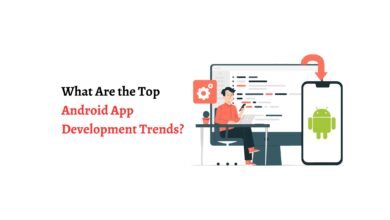Android App Development Guidelines …….

Android App Development Guidelines That Every Company Should Implement
Introduction
This guide will show you the ropes if you’re new to Android app development. We’ll give you an overview of the Android app development process, from idea to finished product. Plus, we’ll provide some tips and tricks to help you along the way.
The first step is to develop a great idea for your top Software Development Agencies. This is often the hardest part! When you’ve come up with an idea, it’s time to begin developing your app. You’ll need to think about things like what your app will do, how users will interact with it, and what features it will need.
Once your code is written, it’s time to test your app and make sure everything works as planned. Testing is important because it helps identify any bugs or errors in your code so they can be fixed before your app goes live.
If you’re thinking about developing an Android app, you need to be aware of the Android App Development Guidelines. These guidelines provide direction for how to design, develop, test, and publish Android apps. They’re important because they help ensure that your app will be compatible with the wide range of devices and operating system versions that are available today.
Adhering to the Android App Development Guidelines is also important from a legal standpoint. By following these guidelines, you can avoid potential intellectual property infringement claims. So, if you’re looking to develop a high-quality Android app that will be well-received by users and avoid any legal hassles, familiarize yourself with the Android App Development Company.
1. Conduct extensive research
Extensive research is one of the mobile app development best practices that should not be overlooked. You can hone your skills by reading the best mobile app development books or simply noting the following points before beginning your planning stage. Don’t overlook the importance of money. Investigate recent gross and net income trends and estimate whether the earnings justify the need for a mobile app. Consider the cost structure’s complexity.
Identify your customers and learn about their needs. You’ll learn about the various customer acquisition channels available to you. You’ll also be able to predict the number of downloads and active users for your app after it’s released.
Look for impediments to your entry. Determine your niche’s competitors. You should be able to select competitors to compare with based on their market objectives and goals. Consider startups or even the largest corporations. Determine their strengths and weaknesses, and then incorporate them into your app development planning.
Catapulting your business and investments into mobile app development necessitates looking beyond the project’s potential outcomes.
2. Create a strategic plan
At this point, you should create a detailed roadmap of the next steps in your mobile app development. Break the plan and processes down into small, manageable chunks.
Establish the worth of your mobile app to your users. List the features and functions that are exclusive to your app. More than just mobility and flexibility of use, how and to what extent could your mobile app accommodate the needs of your users?
3. Select the appropriate platform
The following step is to choose between the platforms iOS and Android. You can use different software with different uses in each of these operating systems to make certain development processes easier.
Choosing a platform isn’t as simple, because even this minor step has an algorithm. This critical mobile app development best practice identifies your target user on a deeper level. There are differences in the behaviors of Android and Apple users that you must account for in your research.
4. Carry out various tests
Tests are used to monitor your app’s overall performance. It should be noted that testing is not only performed before app deployment. Mobile app development is a continuous process that necessitates frequent testing to detect and fix bugs as well as to catch last-minute errors.
If you don’t have a large in-house testing team, you can use software designed specifically for testing. TestFlight can be used when developing an iOS app.
It’s a free online service that invites users to beta test over the air. Beta Family, on the other hand, is ideal for beta testing your iOS and Android apps simultaneously.
5. Put the user experience first.
Users are prioritized. You should create an app based on their preferences and requirements. Understanding the end-point user’s view will give you the ability to provide the best experience possible.
Throughout the development process, prioritize the user experience of your app. The success of your app is determined by the user experience. If a user returns to your app dissatisfied, there is a good chance that the app will be abandoned or uninstalled.
6. Updates and accessibility features
Including accessibility features in your app means you’re not only making it usable to a subset of your target audience, but it could also be a clear differentiator between you and your competitors. Make sure that anyone, including people with physical disabilities, can use your app.
You can add features like voice assistance, text-to-speech, closed captions, and keyboard-only navigation to accommodate their needs and make it more user-friendly.
Final Thoughts
Top android development firms are now creating android apps that are more accessible and user-friendly than ever before. They can use cutting-edge technologies to create responsive Android apps that look great on any device. They are also constantly innovating and improving their products. This means that users can always expect a high-quality experience when they use an Android app developed by Cubix. So, if you’re looking for a team to build an Android app for you, go with one of the best in the industry. You can expect a product that meets your needs and exceeds your expectations thanks to their expertise.



